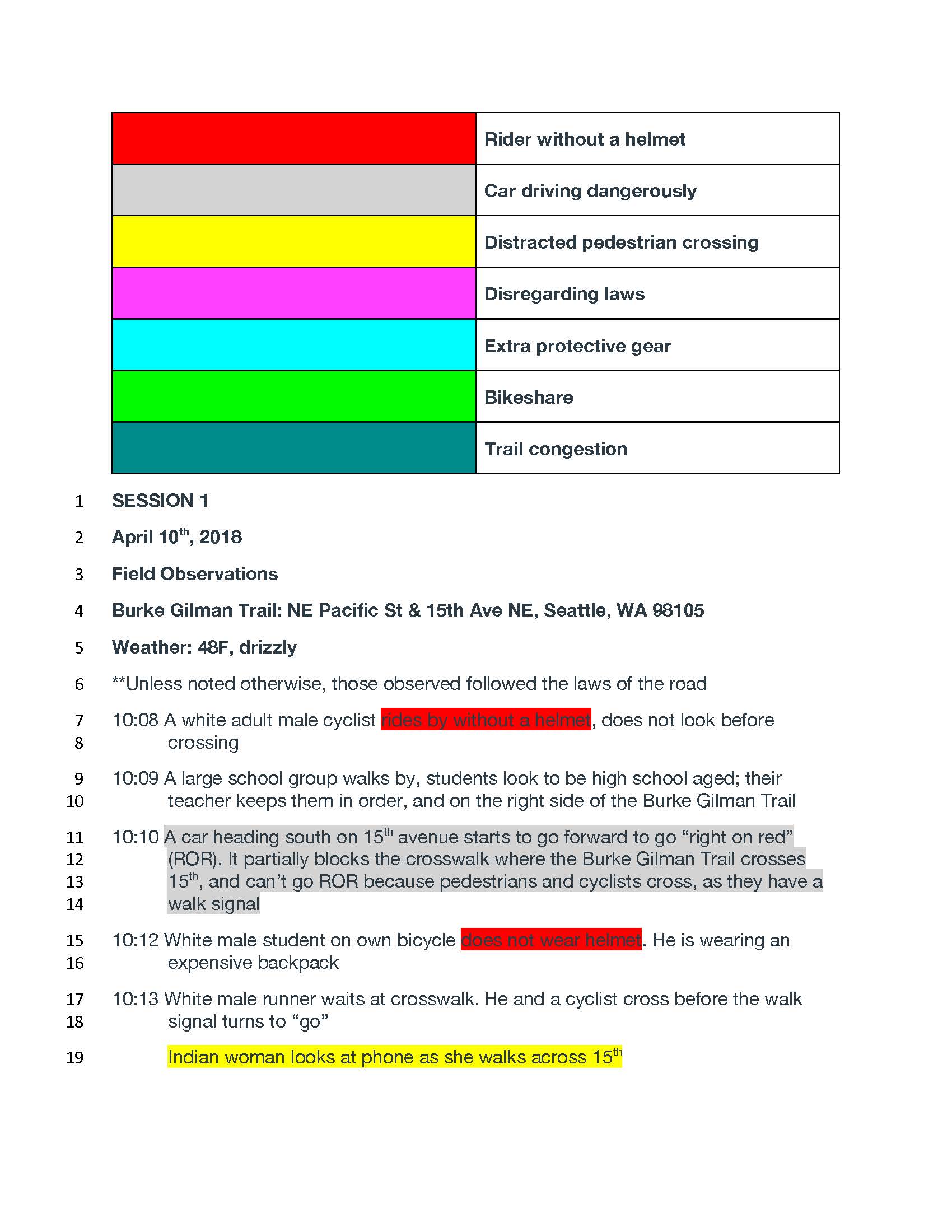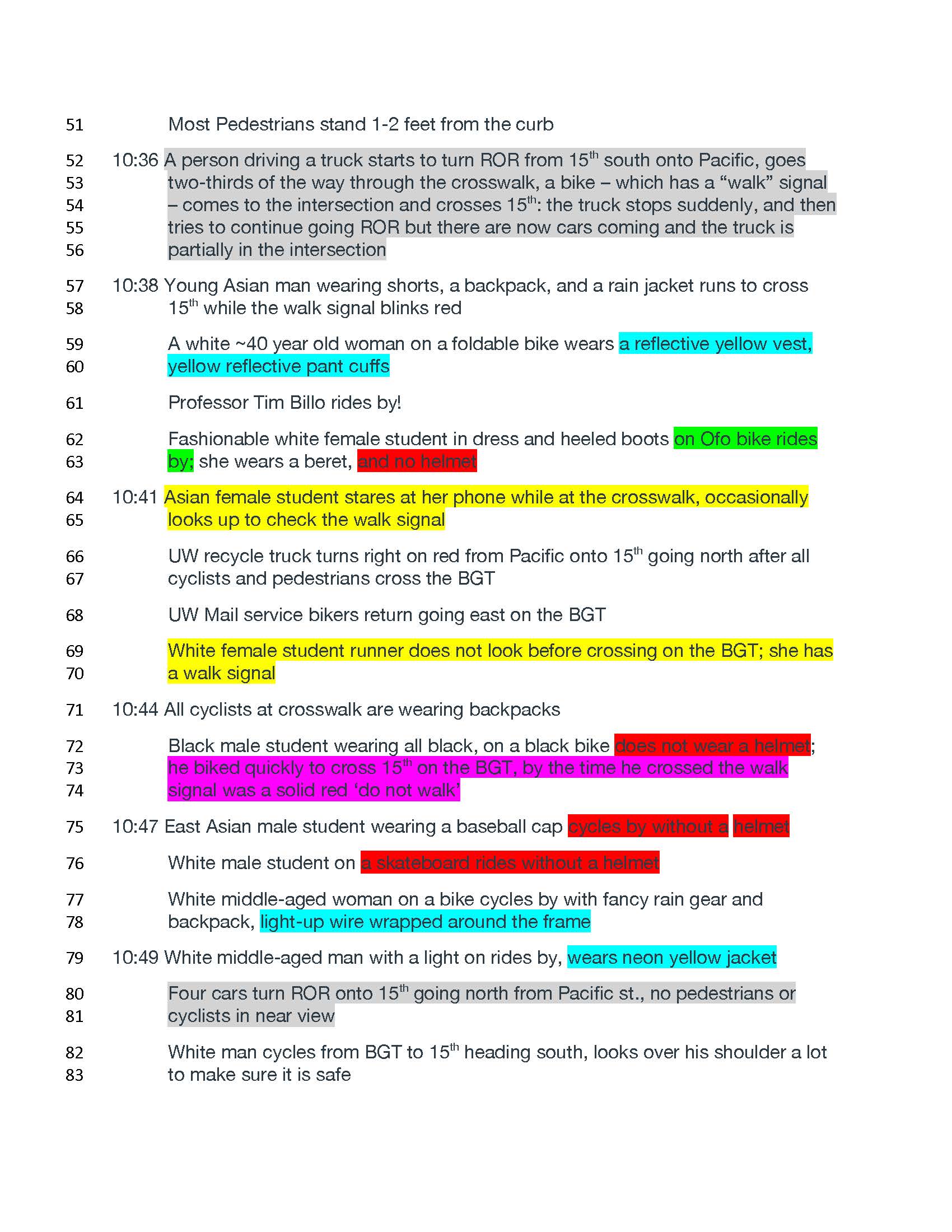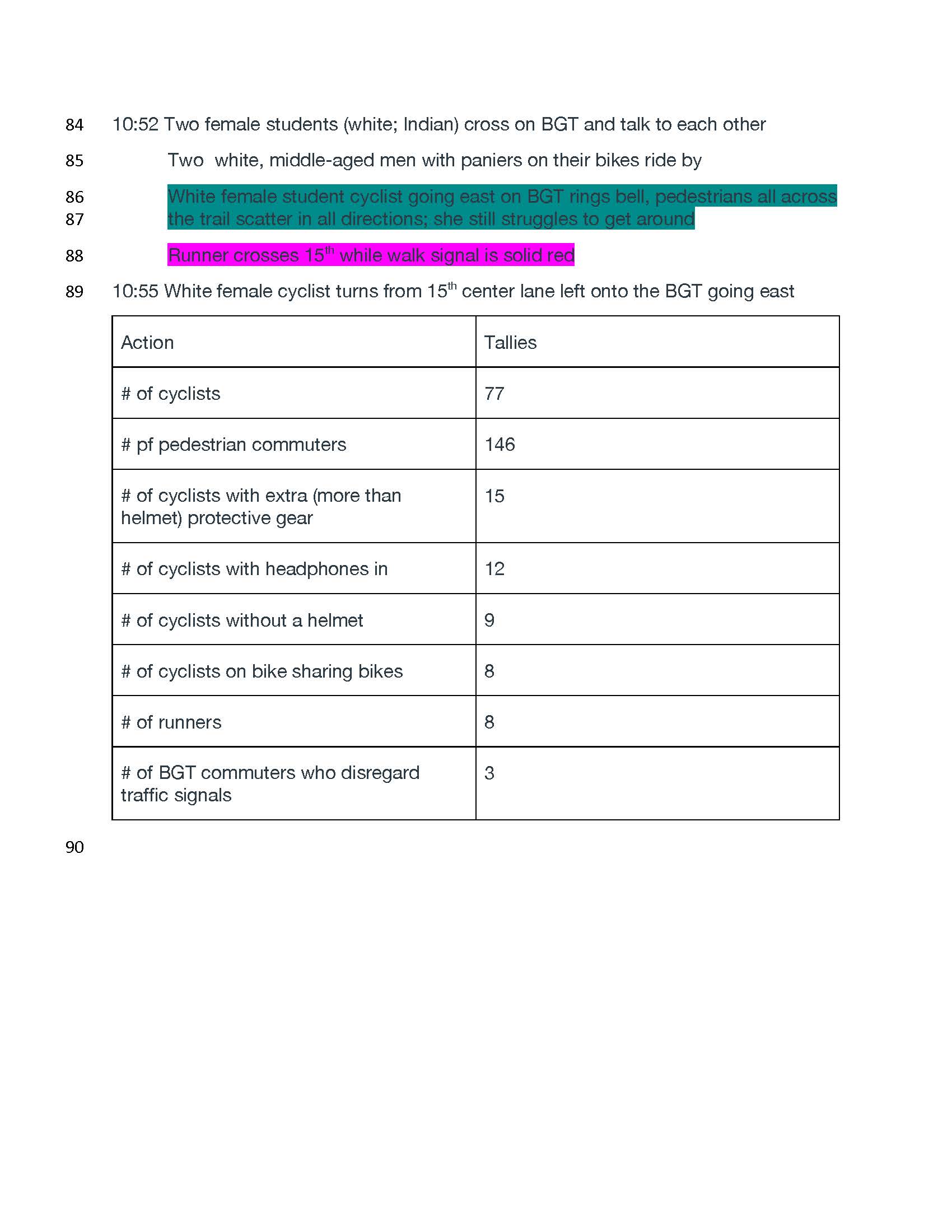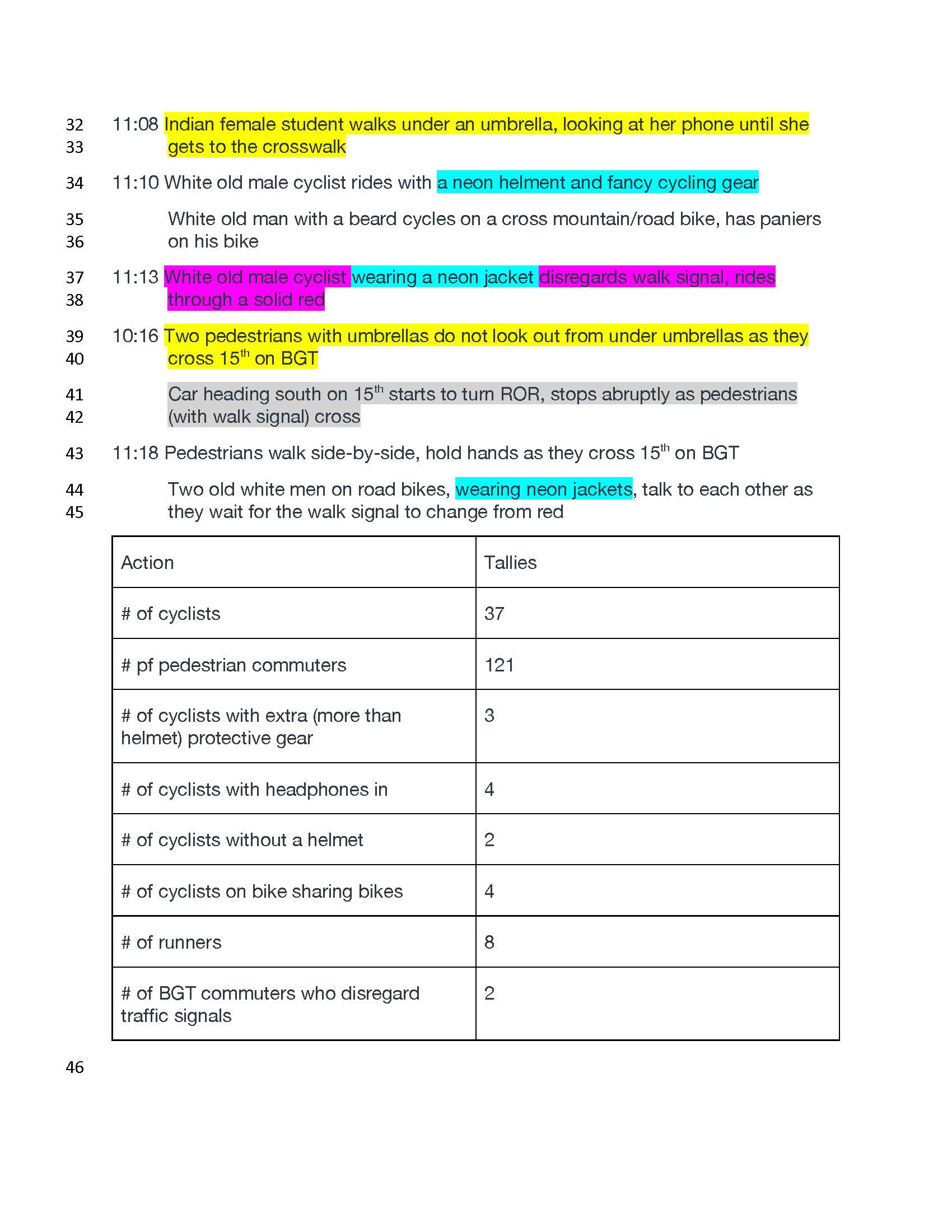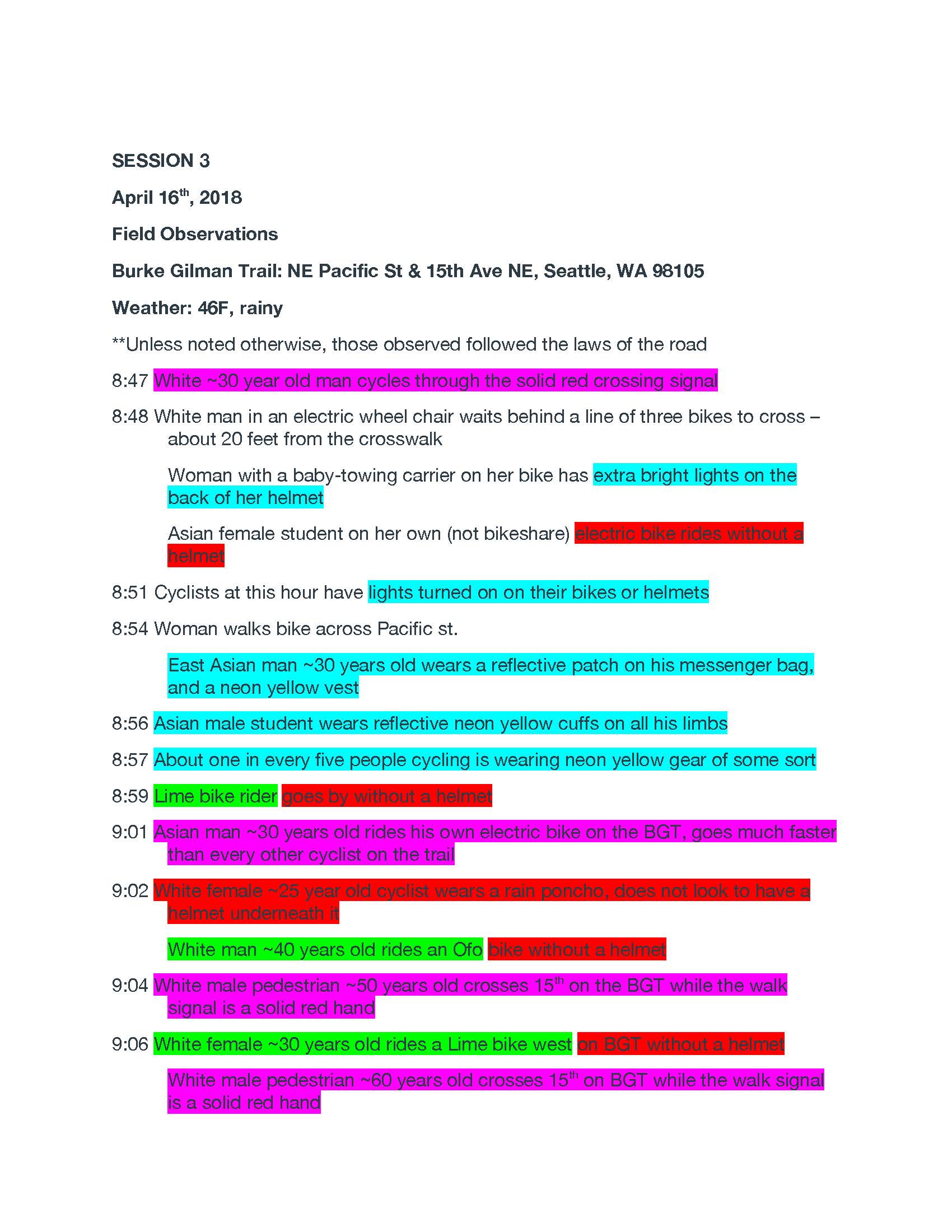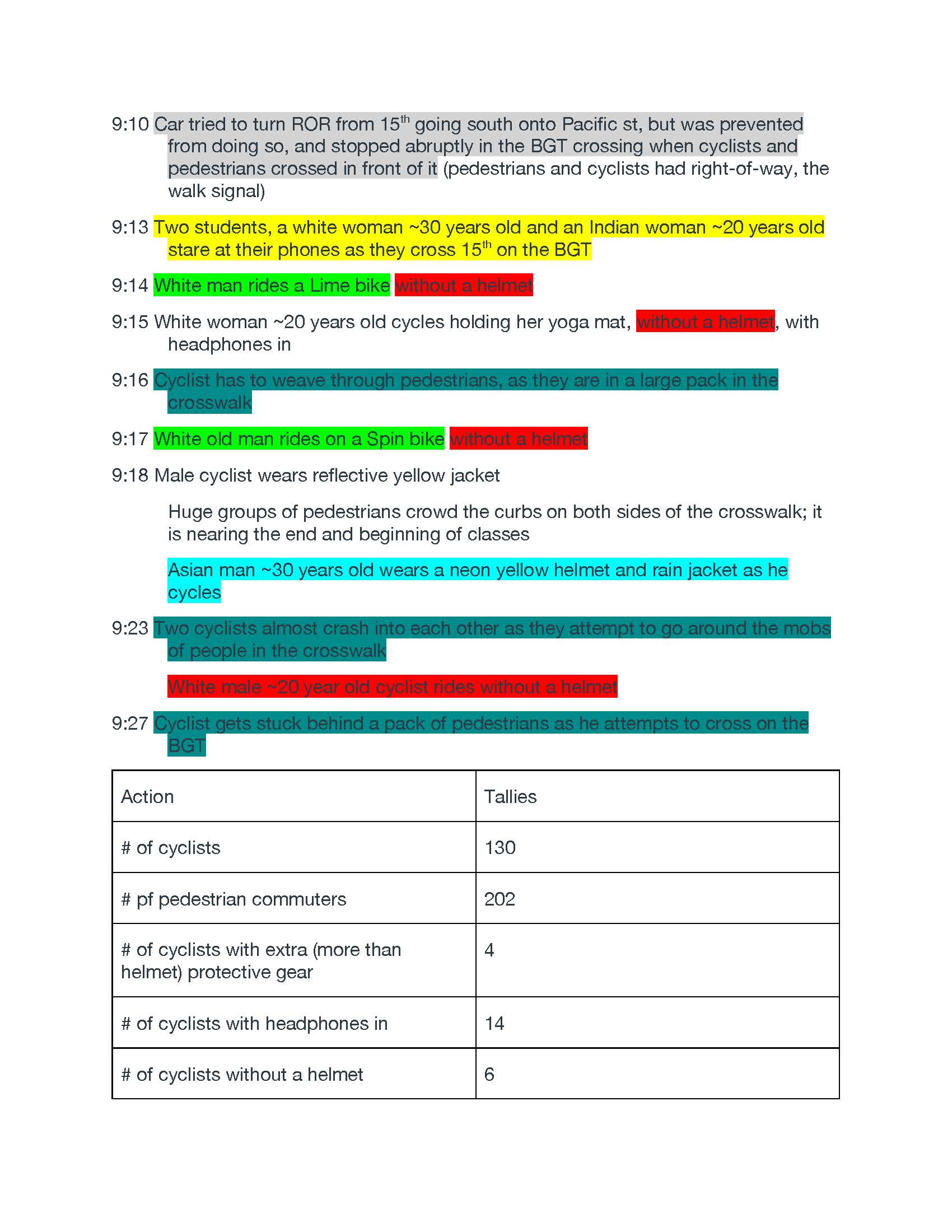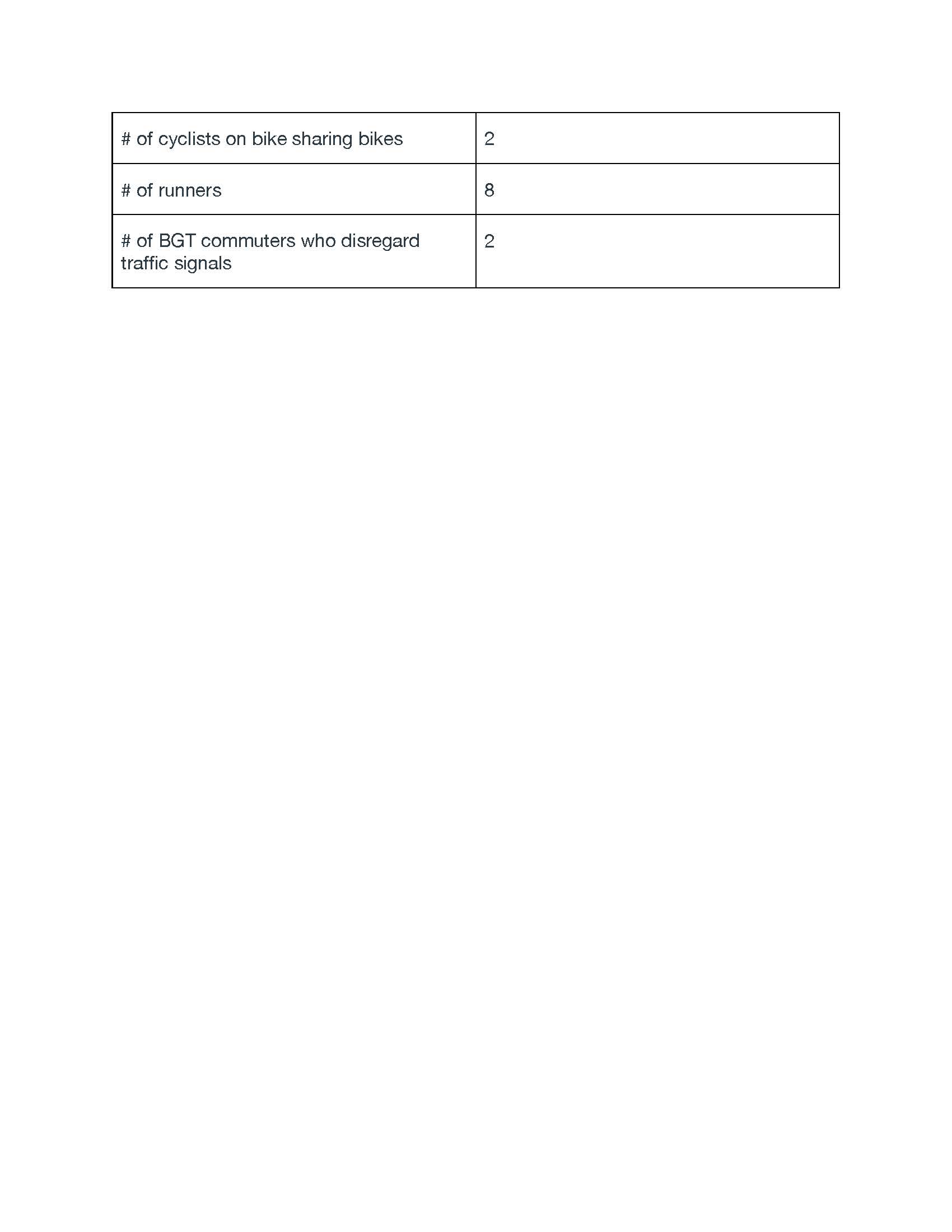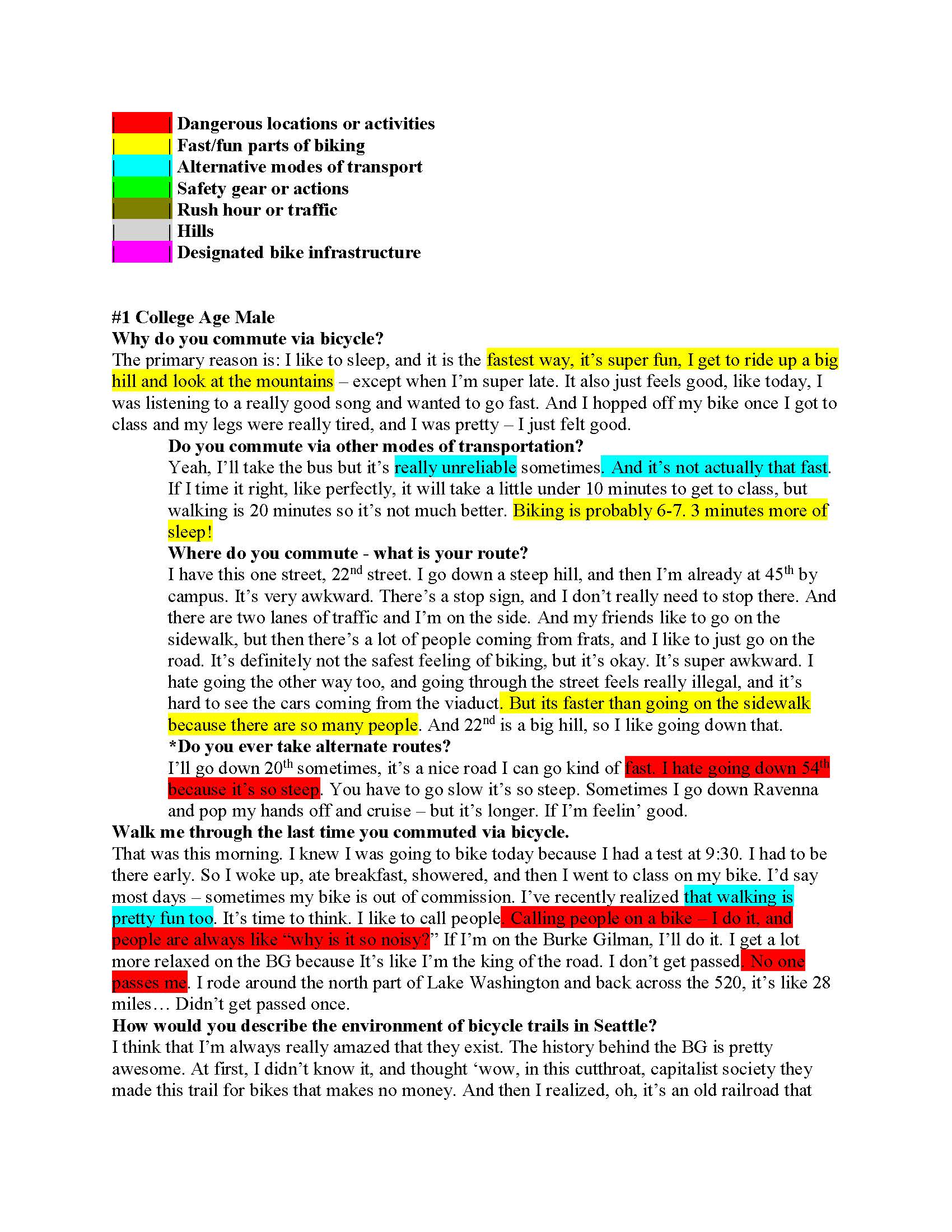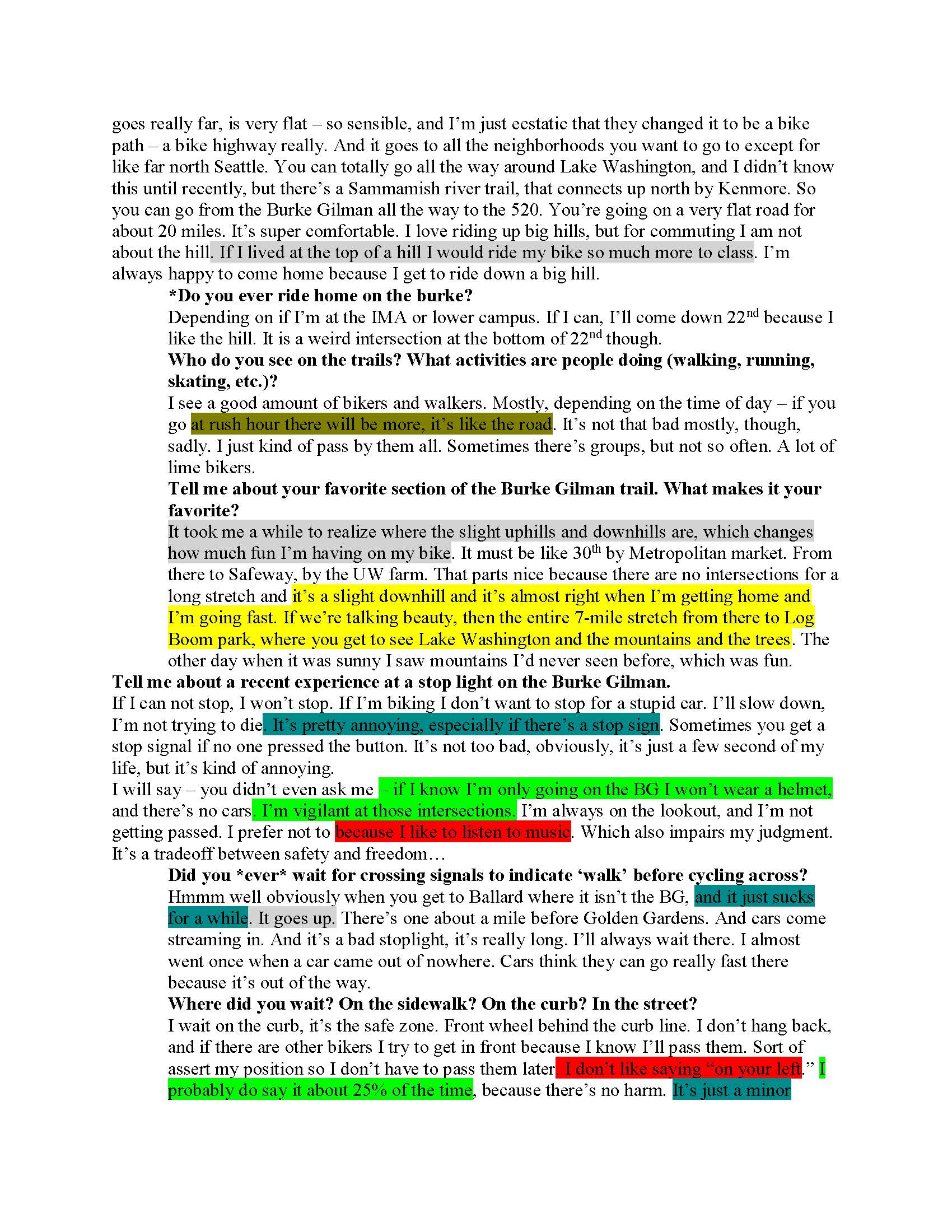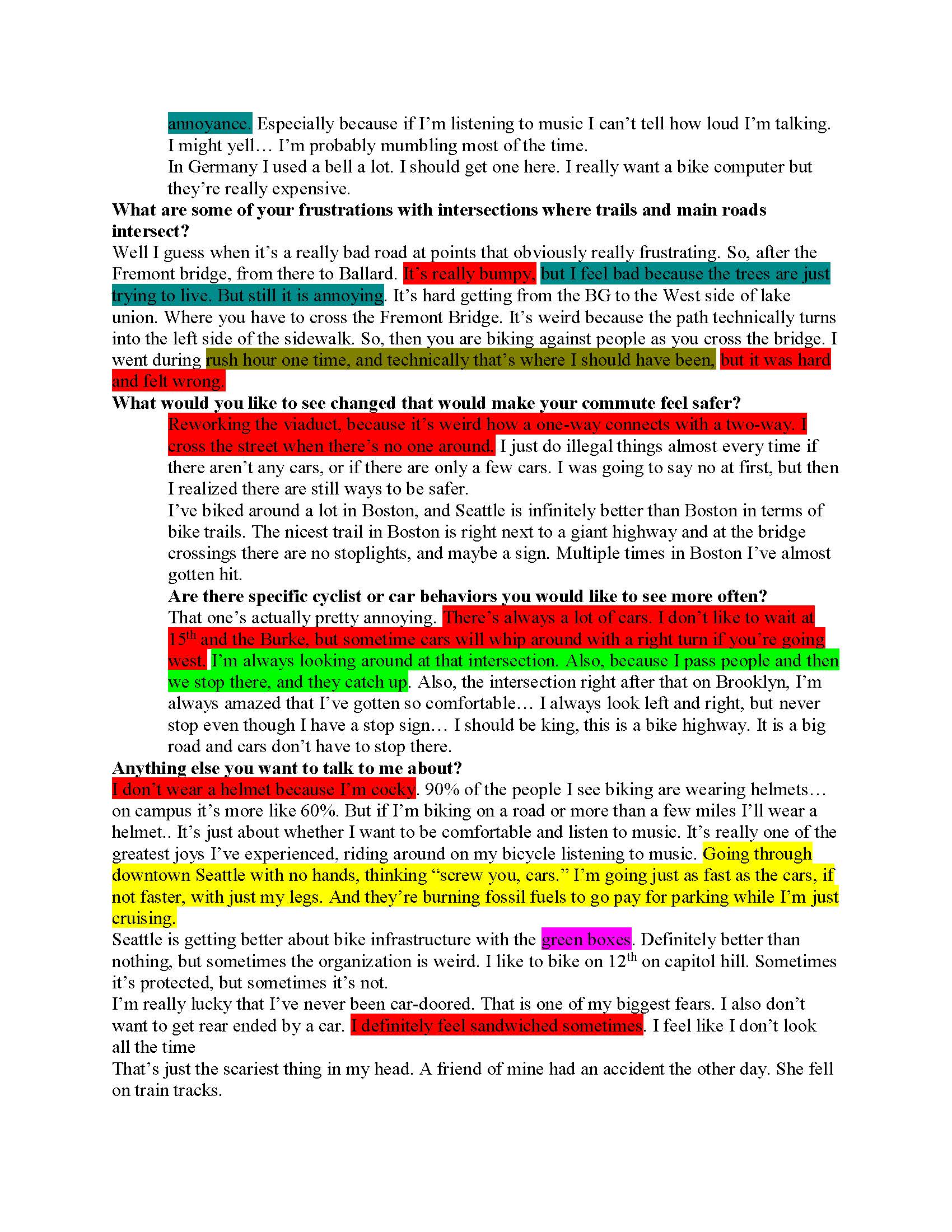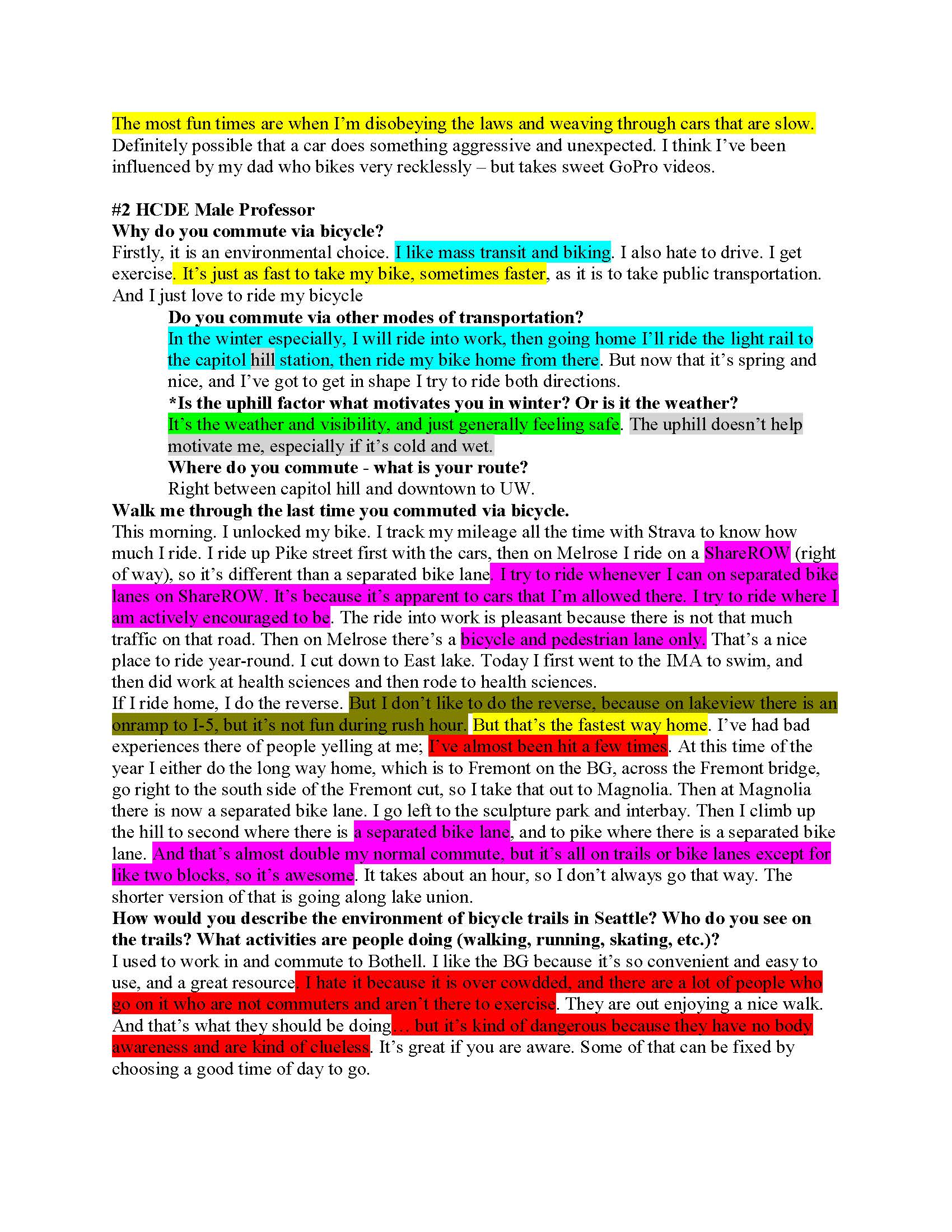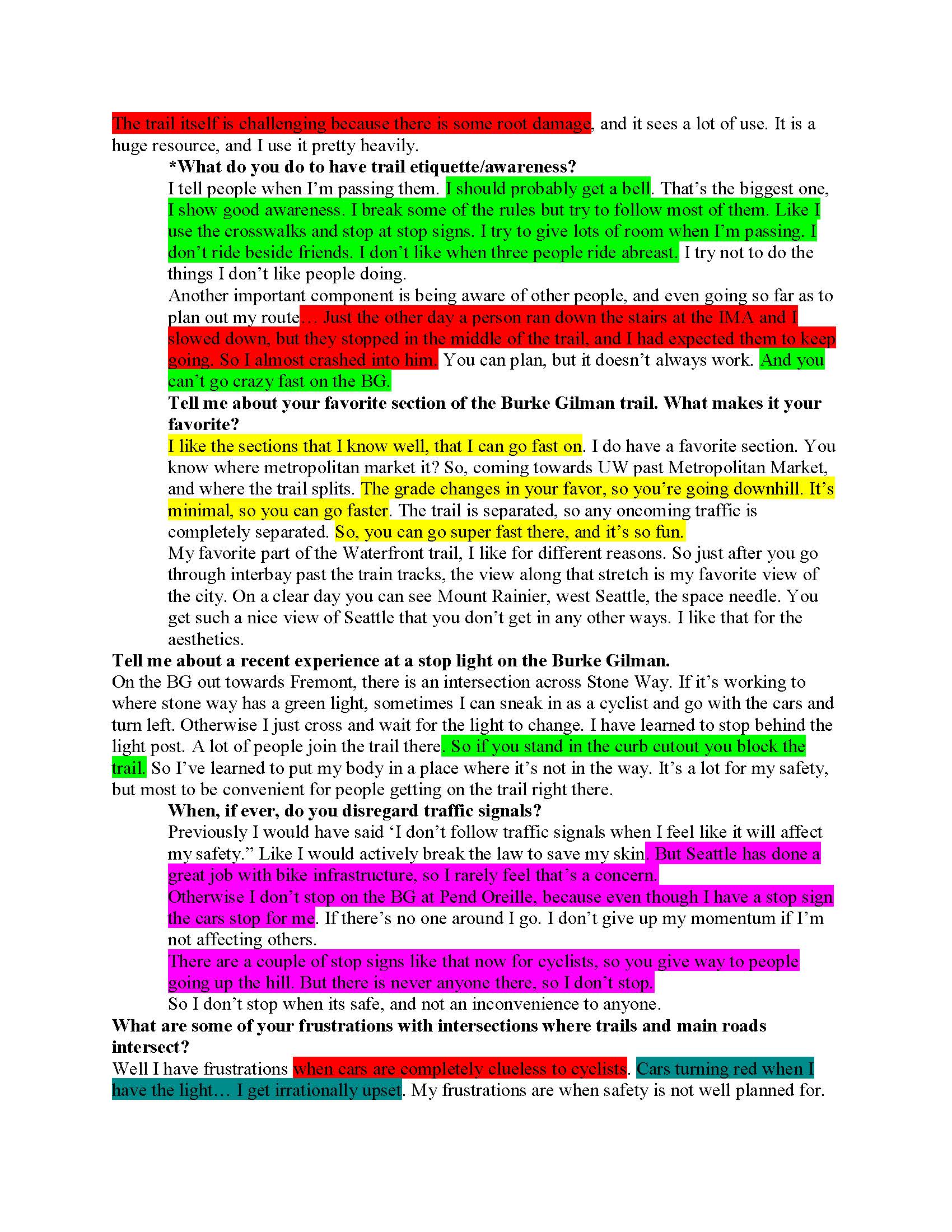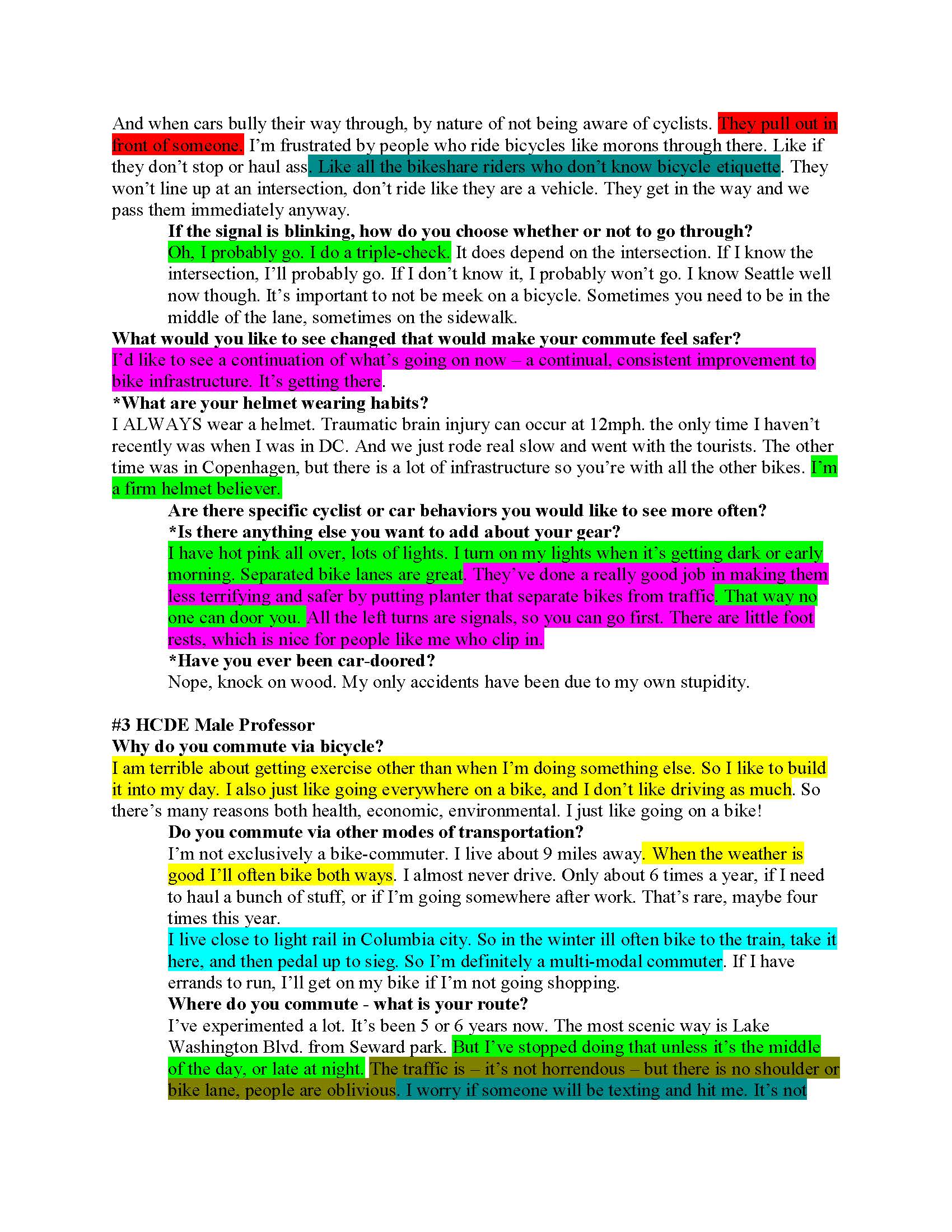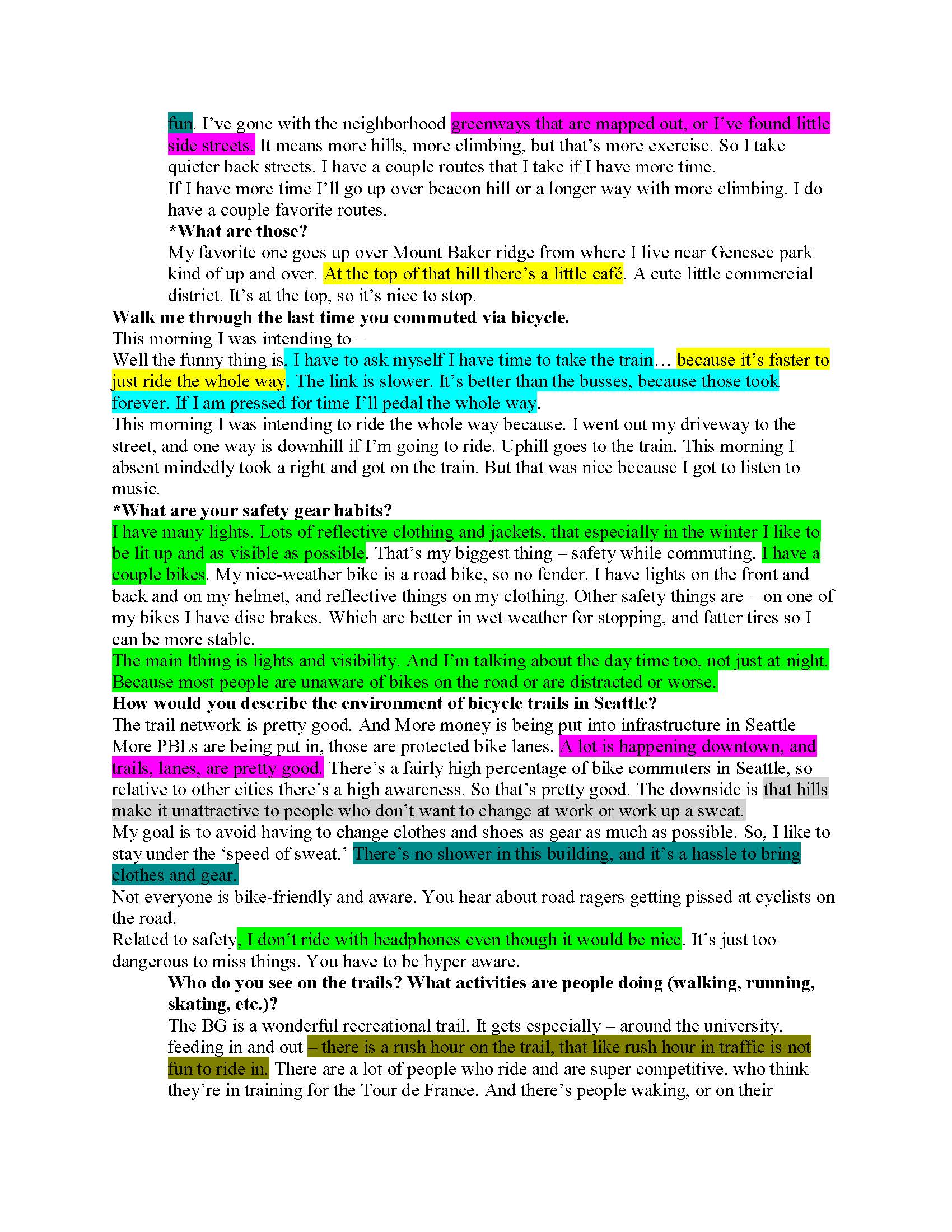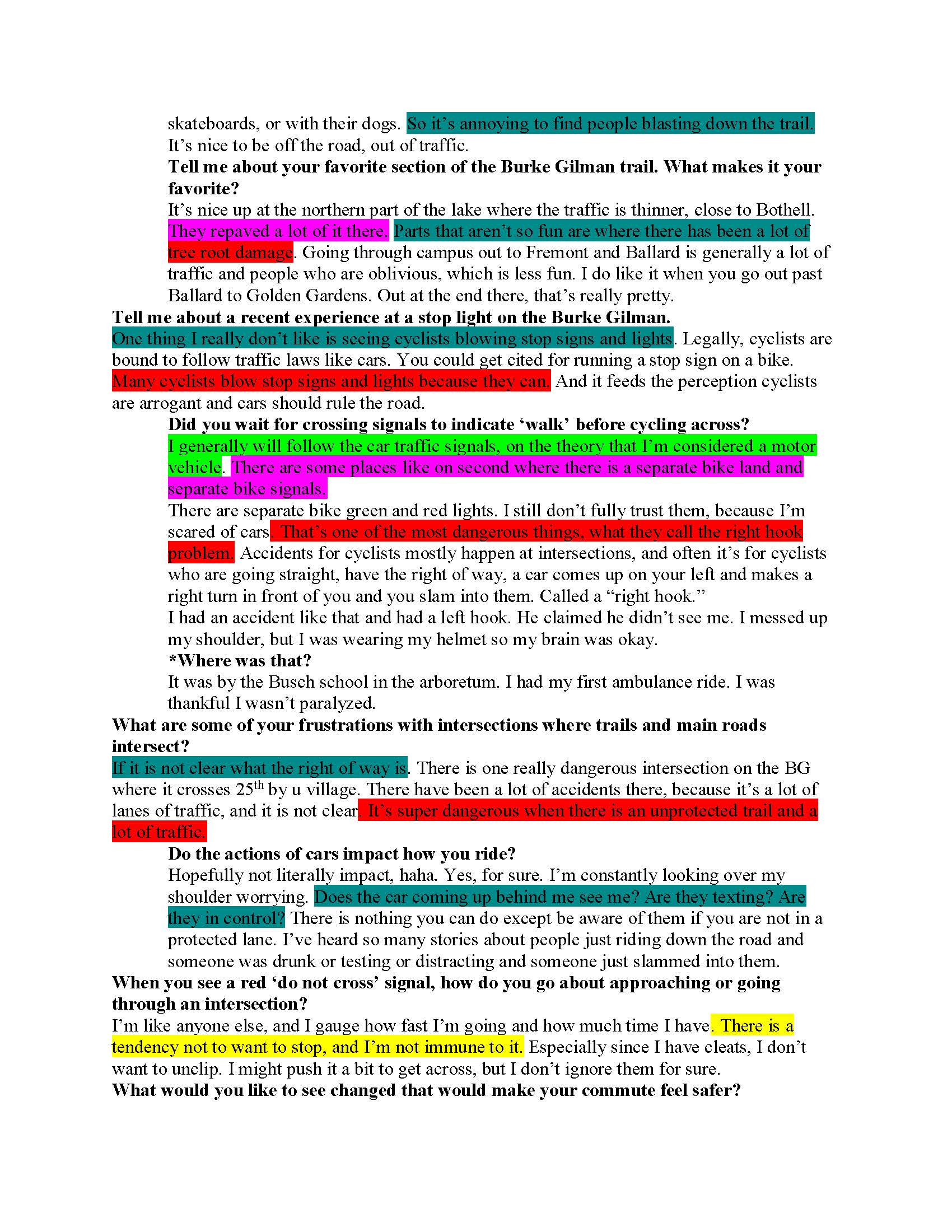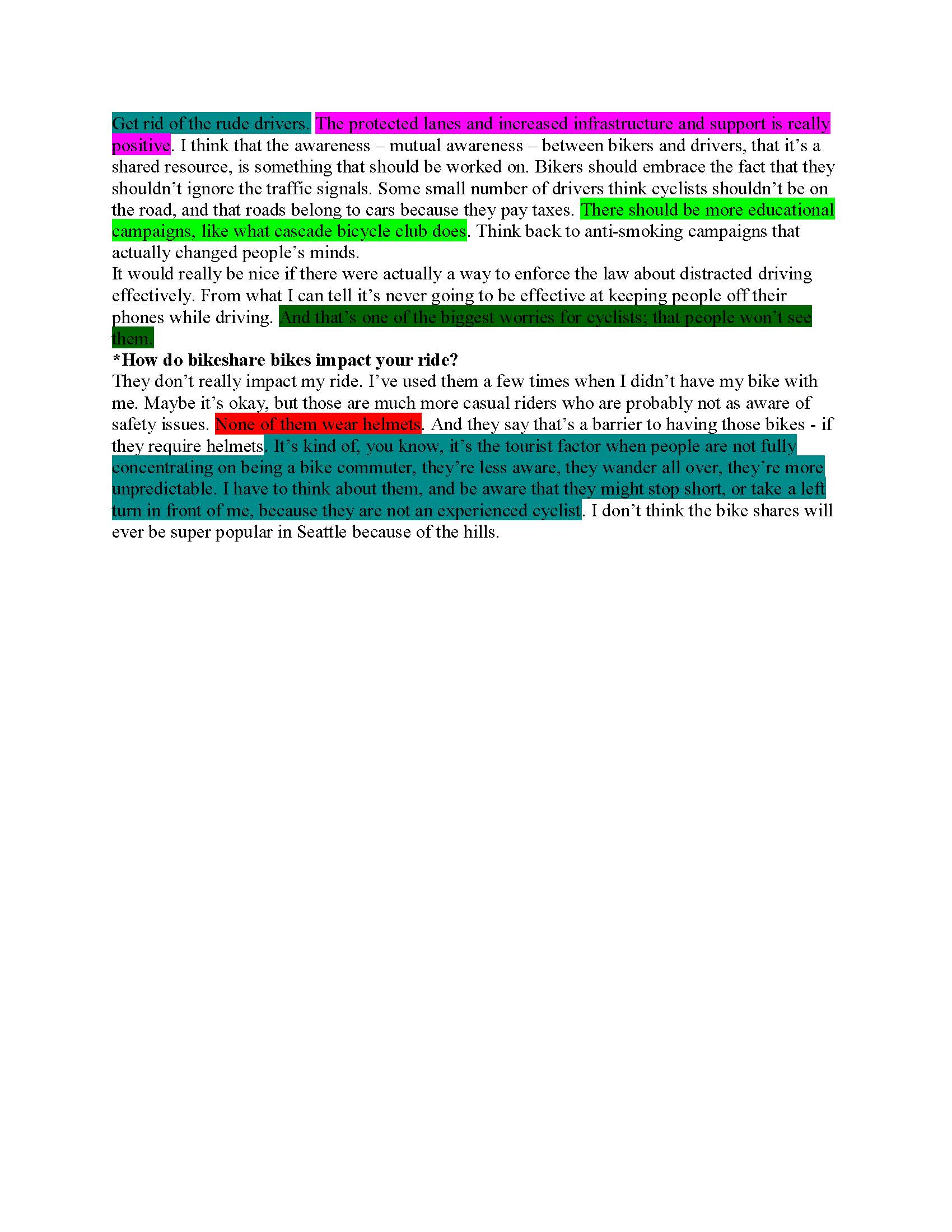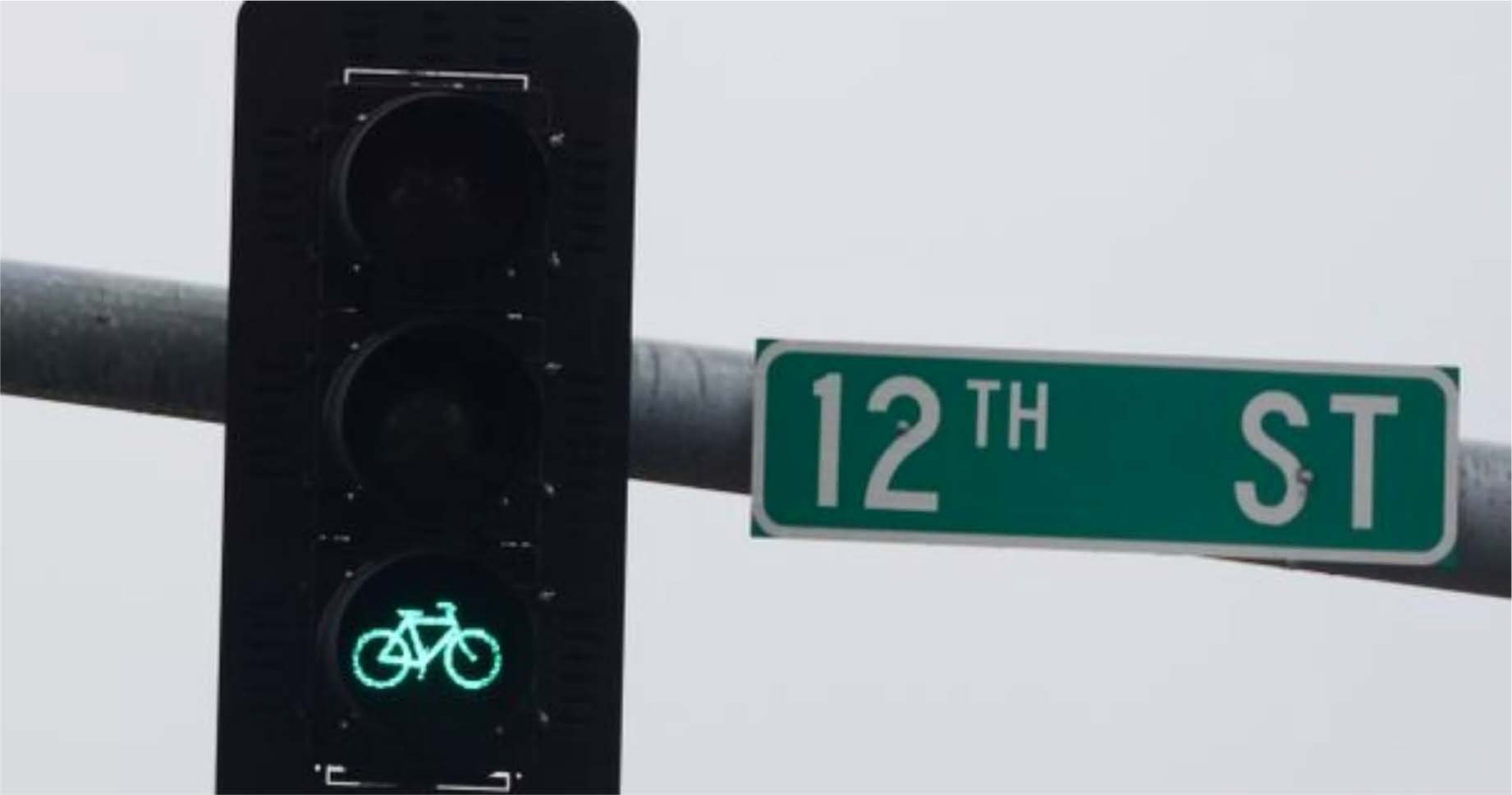Making Commuting in Seattle Safer: a User Research Project
The Timeline: March - June 2018 (3 months)
The Purpose: Conduct User Research to understand and address Seattle’s high rate of cyclist injury and death. The goal of this project was to learn that causes of hazards cyclists encounter, understand cyclists’ values and desires for their commutes, and ultimately to propose infrastructure change.
The Deliverable: High Level Reports and Presentations for each research method; proposed solutions for Seattle Department of Transportation to implement.
Tools: Field Studies/Observations, Interviews, Surveys, Affinity Mapping, Data Coding
01 Background Research & Design Question
Image from the “City of Seattle Bicycle and Pedestrian Safety Analysis”
In Seattle, intersections are the most dangerous places for cyclists and pedestrians; because of this I wanted to study where cyclists, pedestrians, and cars interact. My goal was to figure out what was needed to make commuting by bicycle safer, so more people would be enticed to do it.
Initial design question:
How can I increase commuter safety for bike and pedestrian commuters where roads and bike/foot paths intersect?
02 Field Observations
Three 30-minute sessions at a dangerous intersection for cyclists
To begin my research, I went to an intersection in Seattle notoriously dangerous for cyclists in during peak commute times. I observed for three, thirty-minute sessions.
Coding the data
The main aspects of cycling commutes I noticed on the trail were: cycling without a helmet, cars driving irresponsibly, distracted pedestrians, law-breaking (i.e. jaywalking, running red lights), extra protective gear, people on bike-sharing bicycles, and congestion on the trail.
Takeaways:
10% of cyclists did not wear a helmet, and those on bike sharing bicycles almost never wore helmets
Cars often illegally turned right on red in front of cyclists, decreasing the cyclists’ safety
Pedestrian congestion made cyclists ride irresponsibly to get around pedestrians, which led to confusion and narrowly avoided collisions between cyclists
Recommendations:
The city should put pressure on bikeshare companies to provide helmets, or cheaper ways for their users to obtain helmets, by way of threatening to revoke their permits to do business in Seattle if they do not comply.
Installation of a new street sign that prohibits right turns on red for cars at 15th avenue and Pacific street.
There should be a clear division of where pedestrians and where cyclists should walk or bike on the BGT. There should be a sign which which clearly shows where those on their feet and those on wheels should be (right).
03 Interviews
With three cyclists who commute daily on Seattle’s main cycling path, the Burke Gilman Trail (BGT)
Refined design question:
How can I decrease the occurrences of unsafe commuter cyclist behavior, including – but not limited to – riding without a helmet and disobeying traffic laws, and increase commuter cyclist safety where roads and cyclist trails like the Burke Gilman intersect?
My research questions:
How do cyclist commuters choose the routes for their commutes?
Why does a commuter choose not to wear a helmet; why does a commuter choose to wear a helmet; have they always worn a helmet?
How do commuters choose when to cross against the red hand signal? Why?
What are the emotions cyclist commuters feel related to their commutes?
What do cyclist commuters perceive to be a threat to their safety during their commutes?
How do commuters feel when they disobey traffic laws while commuting?
What behaviors do cyclists do that they believe improve the safety of their commutes
Interview Questions:
While designing interview questions I focused on learning my interviewees’ motivations for cycling to work, how they experienced intersections, and what parts of their commutes felt unsafe.
To view my list of interview questions, click here.
Participants:
Inclusion criterion: they rode bicycles on the Burke Gilman trail to commute to work or school.
Exclusion criterion: riding bicycles only recreationally, and not commuting to school or work.
Data:
Check out my coded interview transcripts below.
After my interviews I used affinity diagraming and stickies to organize the common themes I noticed into groups:
Infrastructure - cyclists want improvements by Seattle Dept. of Transportation
Fears & Unsafe activity - cars pulling out in front of the cyclists in scary
Annoyances & Traffic - congestion, trail damage, and when others aren’t aware of the space they are taking up
Safety - wearing protective gear, lights, being vigilant at intersections
Fun & Speed - cycling is faster and more fun than other modes of transportation
Takeaways:
1. People were motivated by the fun they could have while getting where they were going, not just speed, eco-friendliness, or exercise.
“You get such a nice view of Seattle that you don’t get in any other ways.” - Interviewee #2
“I just love to ride my bicycle!” - Interviewee #3
2. Cars pose a major threat to cyclists, and can cut off cyclists when they try to turn right on red.
“Sometimes cars will whip around with a right turn if you’re going straight.” - Interviewee #1
“It’s super dangerous when there is an unprotected trail and a lot of traffic.” - Interviewee #3
3. Poorly maintained trails, and especially tree roots, lead to discomfort and unenjoyable commutes for cyclists.
“When it’s a really bad road at points that’s obviously really frustrating. Especially after the Fremont bridge, from there to Ballard. It’s really bumpy, but I feel bad because the trees are just trying to live. But still it is annoying.” - Interviewee #1
“Parts that aren’t so fun are where there has been a lot of tree root damage.” - Interviewee #3
Recommendations:
1. More intersections be converted to have bicycle crossing signals that are separate from both car and pedestrian signals (see image left). Each group of commuters would have its designated time to go; this would enable cyclists to cross without turning traffic trying to squeeze through or cut them off. Turning traffic will then get a right turn phase while trail traffic has a red. This would make clear whose turn it is and keep each group of commuters safe and separated from the others.
2. Maintain the trail: that city should allocate more funds to this public work, as the budget currently allocated the Burke Gilman is not sufficient to keep up basic maintenance. The trail was developed in 1978 but has only had spot repairs since; more comprehensive repaving with newer paving materials that can combat root growth would be an ideal solution.
04 Surveys
A 10-question survey to understand cyclists’ habits, joys, and fears
Final design question:
How can I decrease the occurrences of unsafe commuter cyclist behavior, including – but not limited to – riding without a helmet and disobeying traffic laws; increase commuter cyclist safety on bicycle trails and in lanes or spaces designated for cyclists; and increase cyclists’ enjoyment and fun during their commutes?
This process helped me understand that research is iterative, and that user research requires adaptability and lack of bias; my research and design question could not be so precious that I was unwilling to change direction as new data better informed me.
To view my survey questions, click here.
Data:
Here is the coded data from my survey responses.
Takeaway: Speed is important to commuters
14/19 rated speed as the most important factor for them choosing to commute by bike
9/17 rated speed the most fun part of their commutes
Recommendation: improve traffic flow
Have longer green lights for cyclists
Increase number of bicycle-specific traffic lights (see photo to the right)
Takeaway: commuters do not follow laws at intersections
It is illegal to cross the street while the traffic signal is red, but as shown in the graph to the right, commuters do it all the time (even someone who said they always follow traffic laws)
Recommendations: clarify intersection right of Way
Give cyclists more right of way and protection at intersections in the form of increased numbers of green turn boxes (see photo to the right)
Increase cyclist education of what is lawful through campaigns by neighborhood groups and the Cascade Bicycle Club
Takeaway: bicycle infrastructure is enjoyable to use
Recommendation: increase trails
Build more bike trails that parallel major roads in Seattle; spending money on infrastructure for cyclists will encourage biking as a main mode of transportation
Have longer green lights for cyclists
05 Key Findings & Final Reflections
Ultimately, I found three main problems:
Bad trail conditions limit fun and speed of commuters
Cars turning right at intersections are dangerous and scary
Congestion is frustrating, dangerous, and causes confusion
To understand the results it is important to know that in Seattle there are ongoing efforts to improve bicycle infrastructure, but that it is not always effectively placed or designed. People in Seattle have to ride their bicycles on the roads or sidewalks if there is not a lane for them, and this is often dangerous; there is a significant number of cyclist fatalities in Seattle each year. I want this research to help improve safety and decrease that number.
In subsequent research I would look into what social factors do or do not motivate people to commute by bicycle. I would look at socioeconomic and demographic factors and see if there were discrepancies in the rate of bike commuting between various social groups; addressing the root causes or problems in society that inform peoples’ behaviors will help me understand how to make bicycle commuting accessible to all.
While undertaking this research I learned that one’s design question will evolve often and sometimes dramatically, and that is okay. I also learned that I really enjoy the personal aspect of interview research, and that a lot of valuable information can be gleaned through asking what matters to people.
What worked well in my research was doing my studies about something I was interested in and passionate about. Analysis is an intensive process and needs sufficient time to be done thoughtfully; if I had not been excited about the topic I was researching that analysis would have been less fun — though still interesting because I enjoy research. Also, I felt my interview questions covered a lot of topics, and this helped me deepen my understanding of the research space I was working in.
Next time I will look more intently at how social factors inform people’s life decisions. While it is easy to say that everyone should ride a bicycle to commute, the initial investment for buying a bicycle and gear can be prohibitive to some. I’d look into how I could make the economic factor less of a hurdle to getting people bicycle commuting.



